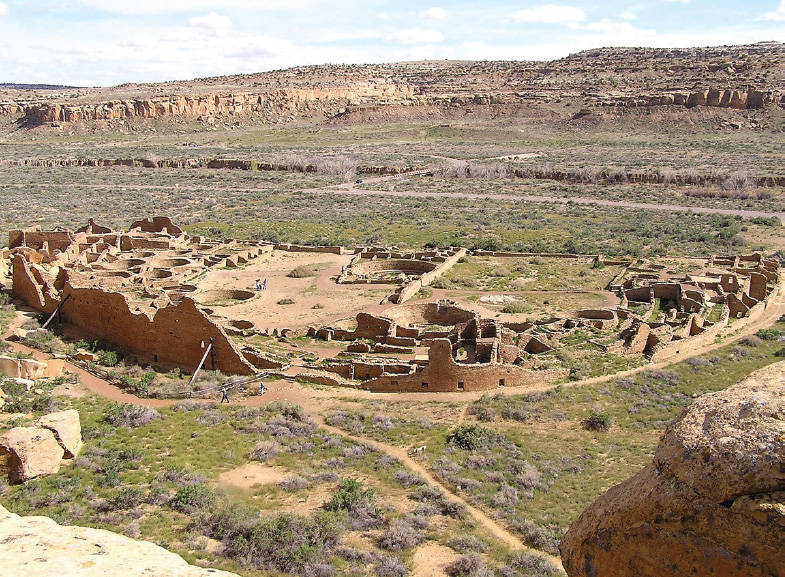The Ancestral Pueblo: Pit Houses and Great Houses
Comparison
Question
p3SYitOWgPPOseYzKMPtkJo5LEoI2yUd2IlV85iUxFYOPt3fXcGnhm/Xu6IFIwTyrXo/OjGDmcTJfAERonFJ/KCbK/D9bUluUyztut0IEs1geTRGL1PWyES1bOPys0OQ3PmyjrirorUt9YiDVvQ5O0zl5X7+CIVu2J5HhizxwujIEBc7kPwxS9n59jeWAnr+[Answer Question]
The southwestern region of North America, an arid land cut by mountain ranges and large basins, first acquired maize from its place of origin in Mesoamerica during the second millennium B.C.E., but it took roughly 2,000 years for that crop, later supplemented by beans and squash, to become the basis of a settled agricultural way of living. In a desert region, farming was risky, and maize had to be gradually adapted to the local environment. Not until around 600 to 800 C.E. did permanent village life take hold widely. People then lived in pit houses with floors sunk several feet below ground level. Some settlements had only a few such homes, whereas others contained twenty-five or more. By 900 C.E., many of these villages also included kivas, much larger pit structures used for ceremonial purposes, which symbolized the widespread belief that humankind emerged into this world from another world below. Individual settlements were linked to one another in local trading networks and sometimes in wider webs of exchange that brought them buffalo hides, copper, turquoise, seashells, macaw feathers, and coiled baskets from quite distant locations.

These processes of change—growing dependence on agriculture, increasing population, more intensive patterns of exchange—gave rise to larger settlements and adjacent aboveground structures known as pueblos. The most spectacular of these took shape in Chaco canyon in what is now northwestern New Mexico. There, between 860 and 1130 C.E., five major pueblos emerged. This Chaco Phenomenon encompassed 25,000 square miles and linked some seventy outlying settlements to the main centers. The population was not large, perhaps as few as 5,000 people, although experts continue to debate the issue. The largest of these towns, or “great houses,” Pueblo Bonito, stood five stories high and contained more than 600 rooms and many kivas. Hundreds of miles of roads, up to forty feet wide, radiated out from Chaco, likewise prompting much debate among scholars. Without wheeled carts or large domesticated animals, such an elaborate road system seems unnecessary for ordinary trade or travel. Did the roads represent, as some scholars speculate, a “sacred landscape which gave order to the world,” joining its outlying communities to a “Middle Place,” an entrance perhaps to the underworld?23
Among the Chaco elite were highly skilled astronomers who constructed an observatory of three large rock slabs situated so as to throw a beam of light across a spiral rock carving behind it at the summer solstice. By the eleventh century, Chaco also had become a dominant center for the production of turquoise ornaments, which became a major item of regional commerce, extending as far south as Mesoamerica. Not all was sweetness and light, however. Warfare, internal conflict, and occasional cannibalism (a matter of much controversy among scholars) apparently increased in frequency as an extended period of drought in the half century following 1130 brought this flourishing culture to a rather abrupt end. By 1200, the great houses had been abandoned and their inhabitants scattered in small communities that later became the Pueblo peoples of more recent times.